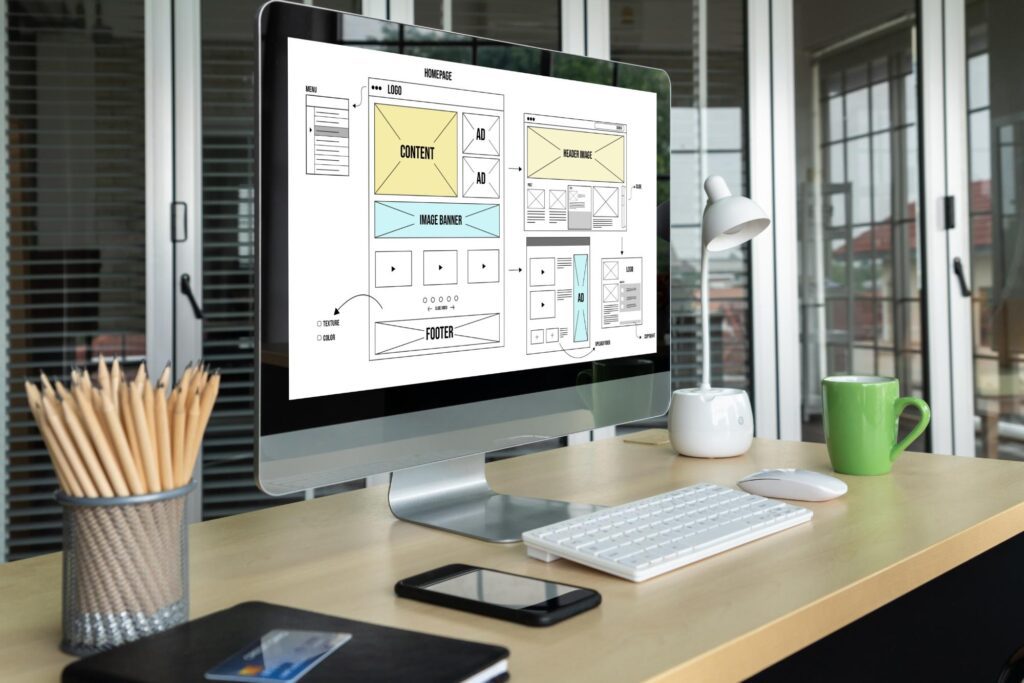I’m sure you’ve heard the term “Design Thinking” numerous times throughout your career but what does it actually mean?
Is it just for designers or should we all be doing it? How is it any different than the way in which we already think?
We are going to explore what this term means and take a closer look at the impact it has on design and organizations as a whole.
What is Design Thinking?

Design Thinking is a process which aims to help you gain a better understanding of the user by challenging basic assumptions and evaluate problems to define them in a different way than before.
As a result, you are able to develop new strategies and solutions that wouldn’t necessarily be possible to establish with your initial level of thinking.
Design thinking is a very hands-on approach that encourages you to think outside of the box to come up with a number of potential solutions in order to solve a problem.
It is a user-led approach. The whole purpose is to gain a deeper understanding of your users wants and needs. Identify their problems and develop a solution to remove this from their lives. It’s more than just about the aesthetic design of a product or service, it encompasses the whole UX/UI design.
This is something that a lot of designers, including graphic designers and engineers naturally do.
However where design thinking is different is that it encourages whole teams and organizations to think in this way.
The concept of Design Thinking isn’t brand new, it’s been around since the 1980s and has become a growing trend.
Tim Brown the CEO of IDEO who popularized this way of thinking defines Design Thinking as “a human-centered approach to innovation that draws from the designer’s toolkit to integrate the needs of the people.
The possibilities of technology, and the requirements for business success”.
5 Steps to Design Thinking
Design thinking is about questioning a problem to gain a deeper-level understanding and gain a fresh outlook on how it can be tackled.
The Stanford School of Design uses a 5 step process to aid this way of thinking:
Empathize

This is the key to achieving a successful UX/UI design.
You need to have empathy and put the user of your products and services at the centre or everything you do.
Define

Start to define the problem through research to generate an initial point-of-view but, don’t stop there!
Analyze it from all angles to gain a full understanding of how it impacts the user.
Ideate

Start brainstorming and developing new ideas, explore all the potential solutions.
No idea is a bad idea at this point. At this stage, it’s important that the whole team is on the page.
Prototype

Start testing out your ideas, the best way to see if something will actually work is to mock up a design and create a prototype in Adobe XD or Sketch.
It doesn’t have to be anything special, a small play dough model or even a Sketch, something that makes it easier to communicate what you’re trying to do.
If it doesn’t work, keep trying.
Share your prototype with users and get their feedback, after all, they are the ones who will be using it.
This isn’t a linear process, meaning that these steps don’t necessarily happen in this order.
More often and not there will be a lot of back and forth between stages, repeating them as much as necessary to get the best results.
Why Design Thinking Results in a Better User Experience?
As more and more success stories of companies like Airbnb who credit Design Thinking as a large contributor to their success creep out of the woodwork.
The more traction this approach gains….and rightly so, based on what we have discussed you can see how this way of thinking has so many benefits.
Design Thinking is challenging organizations to redefine what design means, encouraging them to think more than just what a product looks like.
But really how it works and how it can impact the life of the user.
As I said previously, this is something many graphic designers have always done but it’s been a challenge to get a whole organization to think this way.
It’s really putting the customer at the heart of the business and bringing the whole team together to create more innovative solutions than ever before.
Placing UX/UI design at the forefront.
Most products or services start out with the purpose of solving a problem or fulfilling a need. For some reason, this gets lost along the way and the end result doesn’t always hit the spot. Organizations cut corners and Graphic Designers are told to make things look funky and forget about functionality.
Well, not any more, Design Thinking is making everyone a “designer” and encouraging the development of both fashionable and functional designs that truly deliver on the customer’s needs.






